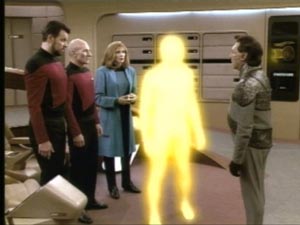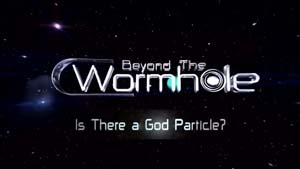 A bat performing a complex flip to land maneuver navigates with a system based on a sophisticated geometric shape. –Evidence of a sophisticated navigation system in bats is also evidence of Intelligent Design The website of the prestigious science magazine Nature recently published an article titled: ‘Bat-nav’ system enables three-dimensional manoeuvres 1 Study reveals surprising neural code based on bagel-shaped coordinate system. The article states that bats are able to navigate because their brains function as a sophisticated compass, programmed with a complex geometrical shape (a torus – a figure similar in shape to a bagel). In their words:
This article was based on a paper which talks about the requirements for such a sophisticated system:
|
Category Archives: Science
Diamonds – A Girl’s and a Creationist’s Best Friend
In an age of visually oriented communications such as TV, movies and the internet, the power of symbols is not lost on content makers such as advertisers and movie producers. This is particularly true when you combine pop icons with these symbols to make a lasting impression. Case in point: diamonds. The point was indelibly etched in the courting rule book when the iconic beauty Marilyn Monroe sang:
Since then, aside from the numerous remakes2 from beauties trying to channel the appeal and success of Marilyn, we’ve had regular reminders that “diamond’s are a girl’s best friend.” They come right around this time of year – in time for the Christmas shopping season, to reminded you that if you really want to express your love to a lady, the proper way to do it is with a diamond. This year it was done with a twist – taking a form of nature documentary and using penguins instead of people3, but the message was the same. There are multiple lessons for Christians here – aside from the well known fact that advertisers can use beautiful women to sell their wares. They are as follows: 1. God first used signs & symbols, and continues to use them During the creation week, God said:
And as the children of Israel were about to enter the promised land, God gave them these instructions:
So God was the first to use signs and symbols.4 And of particular interest is his command to his people to have a symbol of his word, his instructions to them for proper living displayed prominently both on their person , and on their houses. This command was fulfilled with the placing of tephillim (Phylacteries in the New Testament (Matt 23.5)) on the wrist and forehead; and a mezuzah on the house. Why? Because what advertisers have learned, God already knew: the power of a constant reminder in the form of a symbol. His purpose is clear: to impress the importance of His word upon His people, God used symbols – the tephillim and mezuzah – which both symbolized his word and contained portions of it. Another symbol, mentioned briefly in my article Physical Evidence that Jesus Existed, is that of the Chi Rho (the first two Greek letters in “Christ”). History records how God used the symbol to inspire General and soon to be Roman Emperor Constantine to trust in Christ, not the pagan gods on the eve before what would be a decisive battle for the victor. Constantine’s victory at the Mulvian bridge over his rival Maxentius led to Constantine extending his power, allowing him to legalize Christianity in the Roman empire, ending (eventually) the widespread persecution of Christians and setting the stage for accelerated growth of the church. A final example: Jesus indicated that his return will be preceded or accompanied by “the sign of the Son of Man” (Matt 24.30). Thus signs and symbols have been in use by God to further the faith since the beginning, and continue to be in use. Clearly we have as a precedent God’s own use of signs and symbols in furtherance of the faith. 2. God redeems and claims symbols for his own use The cross is arguably the most recognized symbol in the world. For Christians it represents Christ’s passion and redemption, hope and eternal life. Even for non-believers it is a well recognized symbol of Christianity. But it was not always that way. The cross is after all an instrument of death. And not just any death, a death of torture – a slow death of literally excruciating pain. (The root of excruciate is crux – meaning cross). The cross was used not only to execute, but to intimidate. In that regard it also excelled because it became one of the most feared forms of execution in the ancient world. Even so, God took that instrument of death and torture, and turned it into a symbol of hope, and of the true faith. That transformation from sign of intimation and death; to sign of hope for the faithful has not been lost upon historians: Continue Reading |
Atheists – Willfully Ignorant in their Looking Glass World
|
||||||
In the Looking Glass world of Alice in Wonderland, Tweedledee’s “logic” makes perfect sense. In the real world – it’s nonsense – or to be more precise – suffers from both a formal and a non-formal logical fallacy.2 Yet it makes perfect sense to Tweedledee and Tweedledum. In the same manner, the logic of atheists makes perfect sense to them in their looking glass world where they protect themselves from the truth; they can’t see anything wrong with it – yet it is clear to others it is as fallacious as the flawed logic of Tweedledee and Tweedledum. When difficult questions are put to atheists about the nature of reality for which the atheistic worldview has no answer, atheists (and evolutionists alike) throw out fine sounding arguments. And like the Looking Glass characters, their answers have the form of validity, but upon close examination it is apparent their arguments are as fallacious as the logic used by the Tweedles. Let me give a couple of examples. Consider the question – Why is there something rather than nothing? For the Christian, there’s an easy answer: In the beginning, God created the heavens and the earth (Gen 1.1). For philosophers, it is a very deep philosophical question. In fact Martin Rees, cosmologist, astrophysicist and astronomer royal calls it the “preeminent mystery.”3 Such a formulation does not affirm the Christian worldview, but neither is it overtly antagonistic. But for particle physicist, skeptic (of the supernatural) and atheist Victor Stenger that question is:
|
||||||
Detecting the Doctrines of Demons
Honest atheists will tell you there is no purpose or meaning to life, no hope of an after life and all your thoughts, feelings and desires are merely the result of the electro-chemical reactions in your brain and thus are ultimately meaningless. As one such honest atheist put it:
Or as Cornell University atheist William Provine famously stated:
Knowing that the atheistic worldview can not support any sort of future meaning, hope or purpose does not stop some of them from trying to inject these into atheistic life and thought through any number of means. One such means is entertainment. Case in point – an episode of Star Trek: the Next Generation, titled “Transfigurations” which posits that man may be able to evolve into a higher spiritual state. Here’s how the guest character explains it:
Thus the decidedly atheistic Star Trek series displays a curiously messianic figure who has been exhibiting messianic attributes (like healing) just before he is seen completing another messianic miracle: the transfiguration. For those not familiar with the biblical account from which this is clearly drawn, here is the salient portion:
One is left to ponder – what is an atheistic series like Star Trek: the Next Generation doing displaying an episode with Christian themes? The answer lies in the explanation given – “a wonderful evolutionary change.” There it is – the atheistic hope. So once again, it is the theory of evolution that comes to the rescue. Just as it has rescued atheists from having absolutely no explanation for the origin of life, now they are hoping it will provide them with hope for a spiritual future for mankind; a hope that professor Provine has explained and clearly stated that atheists have no business expecting or hoping for. And while it may seem curious for an atheistic series like Star Trek to focus on such overtly Christian themes, once you hear the explanation, it’s supposed to all make sense. But there’s still a problem – a problem that becomes obvious – once you understand the recurring lie of the enemy. Before going there, a word on the historical account. |
||||||
Testimony of the Higgs Boson
Since he does it so well, I’m going to let Morgan Freeman set this up:
According to scientists, the Higgs boson is what gives particles mass. Of course without mass neither the universe, nor life as we know it could exist. Thus the name the ‘God’ particle, at least in some people’s mind – fits since nothing would exist without it. Scientists prefer to call it the Higgs boson or the Higgs particle, but of course for those who report the stories, the ‘God’ particle is a much more catchy headline and moniker – so it has stuck. Purists however will tell you that the name came about when Nobel Prize winner Leon Lederman wanted to name his book about the particle ‘The God – – – – [expletive deleted] Particle‘ – because no one could find it at the time – but his editor talked him into calling it the ‘God’ particle.2 Let’s let Morgan continue:
And thus the Higgs boson – the so called ‘God’ particle – is introduced. The episode goes on to point out problems now that they’ve made the discovery – that in order to eliminate anomalies and make the theory work – there must be not one, but five Higgs types of Higgs bosons. But that’s a simple matter of further discovery – not what I want to discuss here. Of greater interest is a finding that the Higgs boson is in conflict with the standard, universally accepted model of where the universe came from – The Big Bang. And thus we see another problem for the Big Bang theory. I say “another” because the Big Bang theory of course has a number of problems- such as flatness problem, the monopole magnet problem, and the horizon problem4 among others. Since this post isn’t on the technical details and problems of the Big Bang, let me suffice it by saying that the Big Bang has a number of show stopping issues, many of which were supposedly solved by Alan Guth’s theory of Cosmic inflation – at lest these problems that I’ve mentioned. Make two mental notes here:
Let’s move on to the latest Discovery. The latest tests with the Higgs boson indicate that the Higgs is Continue Reading |
||||||
Enraging the Dragon
 A great and wondrous sign appeared in heaven: a woman clothed with the sun… Then another sign appeared in heaven: an enormous red dragon Rev 12.1, 3 |
When it comes to the Big Bang Theory, better to deny it and enrage the dragon, than God |
I’ve noticed a number of Christians – including some well known defenders of the faith1 – like to use the Big Bang as a way to ease a scientifically minded culture into belief in God since the Big Bang theory requires you believe that 1) the universe began 2) a finite amount of time ago, at a point in time, 3) out of nothing – just like the bible says. That leaves a perfect opening to present the Kalam cosmological argument which, briefly stated, says:
1. Anything that begins to exist has a creator
2. The Universe began to exist
3. Therefore the universe had a creator Continue Reading
Time to End the In House Debate
 Among Christians there should be no questions or debates about the origins of life, the earth or the universe. |
||||
|
– How important is this for Christians to deal with? Dr. Danny Faulkner, Author, Distinguished Professor Emeritus, retired and now on staff with Answers in Genesis and its Creation Museum responded:
True, but Dr. Faulkner misses the elephant in the room. Dr. Hugh Ross, Astronomer and best-selling author responded:
Dr. Ross’ answer not only misses the elephant in the room, but it is also very misleading. Why do the biblical creeds not mention the time of creation? (More importantly the duration.) Because that is not one of the issues they were dealing with at the time. In the first few centuries after Christ’s resurrection, the church was besieged with Christological issues – docetism (Christ only seemed to have a body but was really just spiritual), gnosticism (a whole range of errors regarding God from which we get the phrase “children of a lesser god”; errors regarding Christ; and the nature of good and evil), monophysitism (Christ had only one nature), and so on. So they were concerned with clearly and correctly defining who Christ was – that he was “very God from very God” (from the Nicene Creed) and “one person with two natures” (From the Definition of Chalcedon). The Nicene Creed was written in 325 AD; the definition of Chalcedon was written in 451. The issue of the length of creation didn’t come up until needed for evolution, and Darwin didn’t publish “Origin of Species” until 1859. So of course the creeds don’t deal with that. Dr. Ross also states big bang cosmology identifies the who of creation as the God of the Bible. Really? Perhaps he should tell that to Continue Reading |
A question of authority
What will it take for you to believe? Charlton Heston as Moses – “You are not worthy to receive these commandments” |
||||
|
Twitter is of course home to many ongoing debates, one of which is the ongoing debate between atheists and theists; creationists and materialists – those who adhere to the standard non-supernatural theories of origins for the universe and life. One such debate was brought to my attention with the following tweet:
To the contrary:
This directly contradicts the contention that all fossils are “arranged in evolutionary order”. In fact the situation is worse than that when one considers Continue Reading |
Science by Fiat & failed Judo throws – Cosmos’ failed attempts to defend evolution
 In a failed attempted to defend evolutionary theory, Cosmos Episode 2 resorts to science without evidence, and evidently expects to be believed “because I said so.”
…is there a question evidence anywhere in our future? |
||||
|
In the classic 1980’s Wendy’s ad, Clara Peller, after looking at a hamburger that’s mostly bun and almost no meat famously asks, “Where’s the beef?” After watching the second episode of the reboot of Cosmos – titled Cosmos A Space Time Odyssey episode 2 – Some Of The Things Molecules Do I was reminded of that ad as I wondered “Where’s the science?” This episode of Cosmos wants to convince you that evolution is true, and it’s Yes, Cosmos took a page straight out of a judo manual: Continue Reading |
Reclaiming the Intellectual and Moral high ground
Don’t fall prey to logical traps, old arguments, or the emotional baiting of evolutionists.
 “It’s over Anakin, I have the high ground.” |
||||
| In my previous post I referenced an article titled “The Top 10 Signs that You Don’t Understand Evolution at All” which is really a restatement of objections that evolutionists believe they have adequately answered, while at the same time lightly(?) mocking creationists – as evolutionists are wont to do. (Whether lightly or not I’ll leave to you.) As is typical in a list like this, the more important questions (for which they have no answer) are not even mentioned much less given adequate answers to. But since I couldn’t bear the thought of leaving you hanging without the answers having myself referenced the article, here are responses to show none of these issues are problems for rational thinking Christians. A word of warning before we begin: Since he couches many of these statements in broad universals (“never,” “always,” etc. – which is a dead give away that the statement is almost certainly untrue and a good candidate for the “all or nothing” logical fallacy); it follows that the position he’s trying to ridicule may be technically untrue, but the point beneath the ridicule that he’s trying to make has been thoroughly refuted as I note below. Below in bold is Tyler Francke’s list of “The top 10 signs that you don’t understand evolution at all” with my explanations following immediately; and so there is no mistake on who’s saying what, my comments are indicated by my initials.
DC>He makes a number of questionable statements here, I’ll just point out a couple. First he notes:
DC>Evolution of the type we’re talking about – molecules to man is not observable. Like many evolutionists he is committing the logical error of equivocation – using the term evolution in more than one sense (which is commonly done to win arguments, though it’s logically fallacious). Natural selection (which is not evolution) is observable; molecules to man evolution is not. Second, he goes on to talk about an inference to the best explanation (which I drew upon in my last article) but intelligent design theorists and creationists alike, (not to mention scientists who dissent from evolutionary theory) would say given the evidence, such as the fossil evidence below, he has not drawn an inference to the best explanation by believing it points to evolution. He states:
DC>I would challenge him that it is not the evidence that points him to evolution, it’s his a priori beliefs (science is authoritative over scripture) that lead him to the conclusion that evolution is true because judging by evidence alone, (such as the evidence from DNA, the young solar system, etc.) the correct conclusion is that there was an intelligent designer. 2. You think we’ve never found a transitional fossil. DC>This is frankly very misleading. A more precise statement would be Continue Reading |




